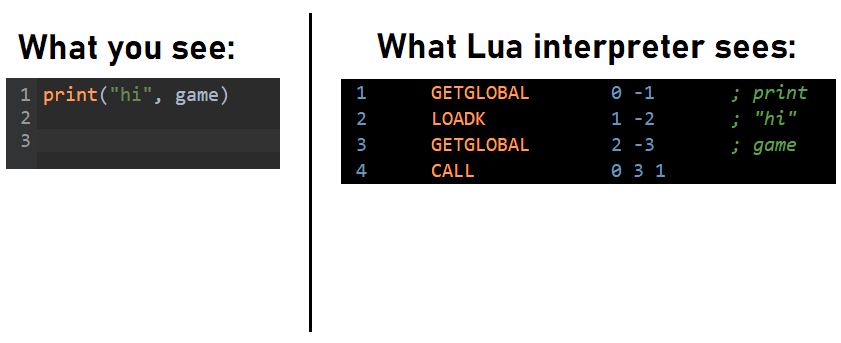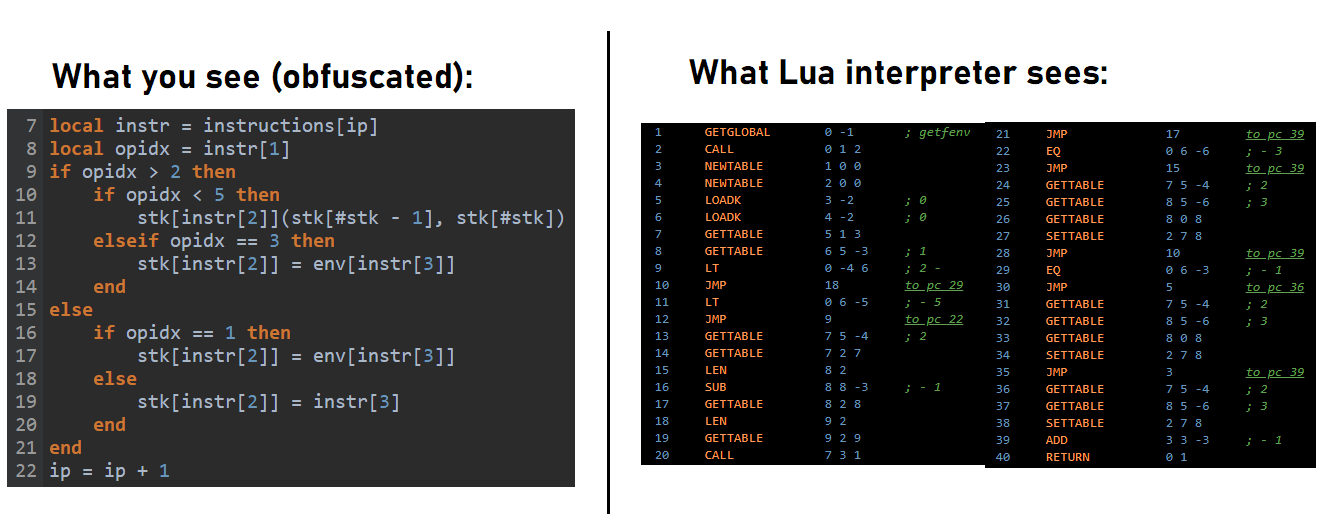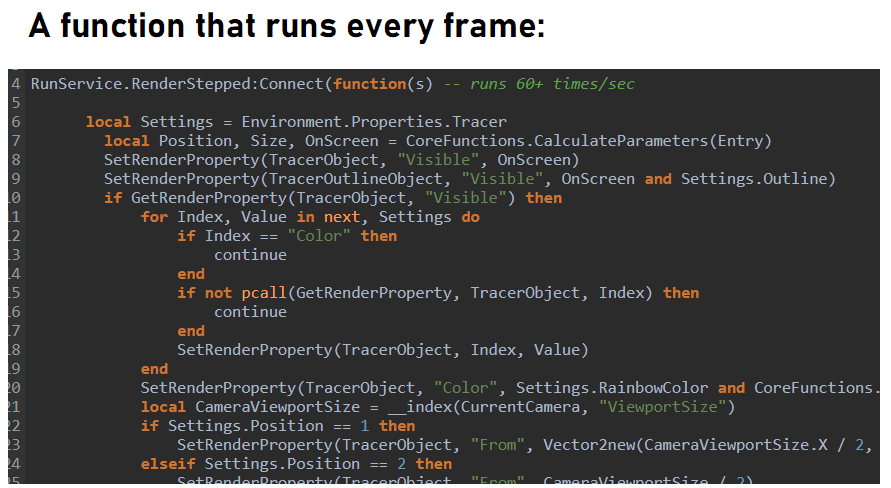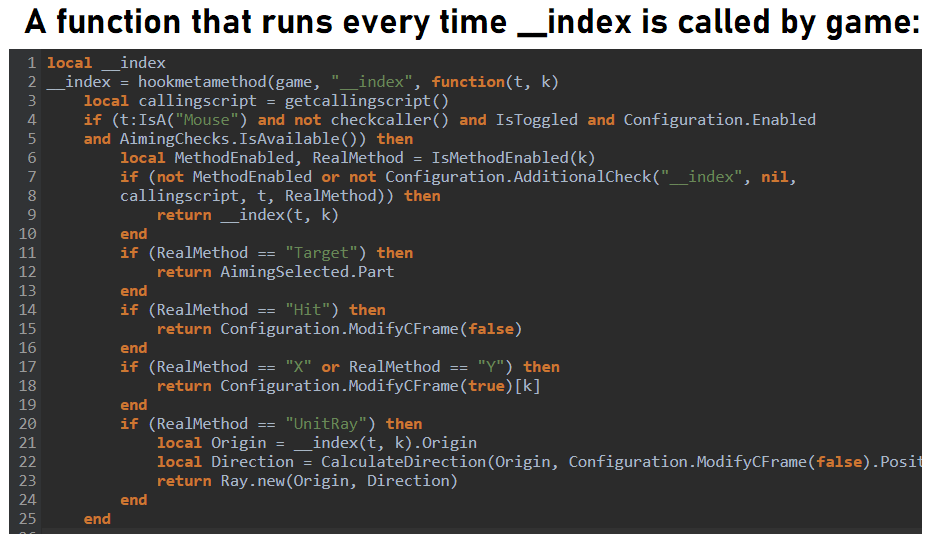macros in your script. This documentation will show you everything about the LPH_NO_VIRTUALIZE macro
Why does obfuscation affect performance?
Because Luraph™️ is a VM based obfuscater that generates its own instructions that are interpreted by Luraph, which, in turn, is interpreted by the Lua interpreter. So the number of instruction cycles increases exponentially.How obfuscation works
How obfuscation works
Normally, your script gets compiled into a set of Lua instructions. See the example below:


How Lua code is compiled to bytecode

How Luraph obfuscates Lua code
RenderStepped example
RenderStepped example

Example of a RenderStepped connection
CalculateParameters) used in this loop, which automatically means that function will be executed as well, which will lead to even more and more instructions to run.__index:
__index example
__index example

Example of a metamethod hook
__index runs quite often. Example:game.Workspace,game.Players...- etc…
__index function and run the code above. This will be extremely resource intensive and heavy, considering that it is probably called thousands of times per second.And on top of that, if you obfuscate this part, you will end up with more than a million instructions to run every second, which will crash your game.How to deal with this problem?
You have to exclude these chunks from obfuscation. You can either useloadstring(), or LPH_NO_VIRTUALIZE.
It is recommended to use LPH_NO_VIRTUALIZE instead of loadstring while excluding chunks from obfuscation, because it is generally harder to view the code when you’re using LPH_NO_VIRTUALIZE.
How to use LPH_NO_VIRTUALIZE?
LPH_NO_VIRTUALIZE takes one constant argument which must be a function, and returns a function that can be called.
You will find some examples below on how to properly use LPH_NO_VIRTUALIZE:
Good usage
Good usage
Bad usage
Bad usage
Where to use LPH_NO_VIRTUALIZE?
RenderSteppedconnectionsHeartbeatconnections__indexmetamethod hooks__namecallmetamethod hooks (optional)while trueloops with no delay- GC scan loops
functions, if they are called by one of those above
